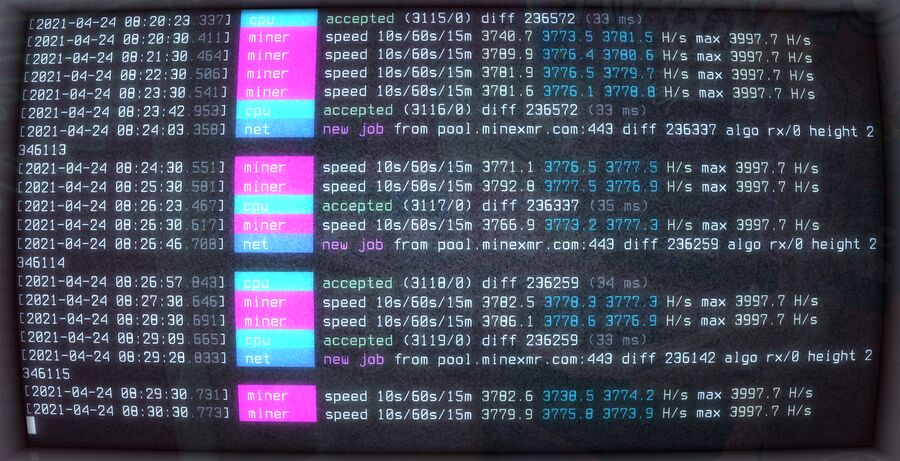Monero P2Pool V1.0 Is Released
The latest version of P2Pool, a decentralized Monero mining pool has released. This is the first official release, signaling an invitation for more users to try out the new software.
written by 단서방 (Danseobang) 2021-09-20 - last edited 2021-09-21. © CC BY

XMRig, a P2Pool compatible mining tool, mining Monero XMR currency on a CPU.
Instructions for using P2Pool remain more complex than traditional mining software. Adding decentralization to things tends to produce that result.
A Closer Look[edit]
P2Pool works by running a separate blockchain that's merged mined with Monero. This blockchain finds blocks quicker than Monero, but whose work put in can also be used on the regular Monero blockchain. When a block on P2Pool is also valid on Monero, every miner who found a block on P2Pool since the last Monero P2Pool mined block gets a portion of the Monero reward.
P2Pool is able to run blocktimes as low as 1 second using uncle blocks, as seen in Ethereum.
To a regular miner, P2Pool's only advantage as listed in the README is lack of fees:
| Pool type | Payouts | Fee | Centralized? | Stability | Required Setup |
|---|---|---|---|---|---|
| Mining Pool | Regular | 0-3% | Yes | Dependent on pool server | Mining Software |
| Solo | Rare | 0% | No | Stable as your Monero node | Monero Node |
| P2Pool | regular | 0% | No | Stable as your Monero node | Monero Node + P2Pool Node + Mining Software |
However, reducing attack vectors on the Monero network may ensure the longevity of their profits.
Monero's Search For Decentralized Mining[edit]
Cryptocurrencies like Bitcoin have specialized hardware (ASICs) for validating transactions and minting new rewards. With expensive costs leading to a high barrier of entry, Bitcoin mining is more difficult for regular hobbiests and ASIC production companies are able to mine on next-generation equipment before the average consumer.
On the contrary, Monero's "hashing" algorithm RandomX uses random code execution alongside anti-ASIC techniques to stunt advantages of specialized hardware over traditional CPUs. The idea is if an ASIC company needs to develop something close to an Intel chip just to mine faster, their initial downpayments on R&D and production are astronomical for a short lived burst of mining that would be rendered ineffective after a hardfork.
However, Monero's mining wasn't always a success. Before RandomX in 2018, Monero's much simpler "memory hard" hashing algorithm was mined by ASICs in secret, leading to massive centralization and a large opportunity for network attacks. Meeting logs in 2019 show the Monero team considered moving to SHA3 if RandomX posed risk to becoming ASIC mineable again.


Enable comment auto-refresher
Anonymous (6783f5f89c)
Permalink |
Anonymous (69b9aecb81)
Permalink |
Anonymous (69b9aecb81)
Permalink |
Anonymous (3bdd8aac63)
Permalink |